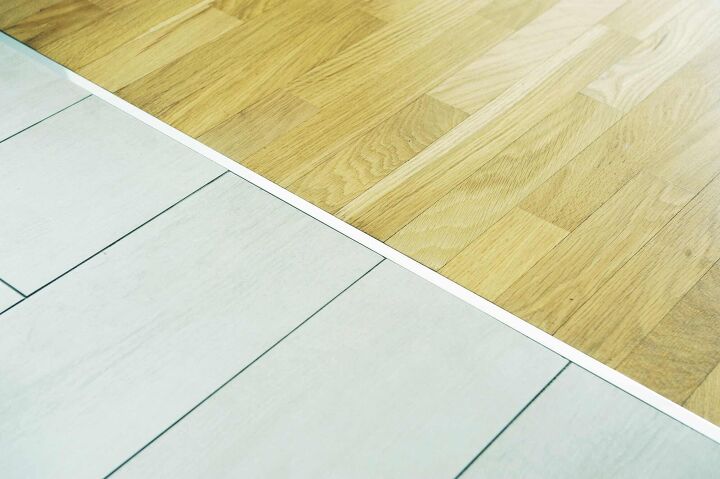Should Flooring Be The Same Throughout The House?

While mixing different types of wood in your house isn’t against design rules, there is some comfort in uniformity throughout the house. However, having a variety of other floors can provide some vibrancy to your home. But when it comes to the best design, should the flooring be the same throughout the house?
Yes, it is best to use same flooring throughout your house to make the space in your house seem larger. Choosing the same flooring can provide an easy way to tie different rooms together. However, if you want different floorings, try and limit those to three or less different ones.
Below, we will get into different types of similar flooring you can use to maintain a uniform design. We will also get into specific types of flooring and how you should treat them depending on the room.
Do You Need to Hire a Flooring Contractor?
Get free, zero-commitment quotes from pro contractors near you.

How Many Floors Should I Have In My House At Most?
Your home has to maintain some form of uniformity. While it is not required, you need to pick complementary colors and shaded at the very least. Because of this, you should typically pick three different styles of floors. Those styles can vary between living areas, the bathroom, and the kitchen. Dining room floors should most likely match the kitchen.
You will thank yourself for deciding to choose something with uniformity. It gives you a relaxing space to live in, making you less likely to feel stressed in your own home.
But what types of floors should you choose for these rooms? Below, we will get into some different options.
Choosing Your Floor Based On Room
We will be going through five different types of rooms and floor options you can choose.
- Living Room
- Bedrooms
- Kitchen
- Bathroom
- Dining room
What Floor Is Most Appropriate For A Living Room?
- Hardwood
- Laminate
- Thinner carpet
You often hear that first impressions are everything. Consider your living room to be the first impression of your home. Because of this, your living room has the most flexibility when compared to other spaces.
Think about the color of the entryway. Whether you have a concrete set of stairs or a brown deck, that color should blend in with the living room. The colors do not need to match, but try and find a similar shade. Also, try and avoid thicker carpets. Thicker carpets will trap more dust and mud from the outdoors. It makes them more challenging to clean.
Bedrooms
- Thicker carpet
- Laminate
- Wood
- Thinner carpet
Bedrooms are a plush, cozy space that makes it easy to think of sleep. Because of that, it is more appropriate for you to put thicker carpets here. They are easier on the feet and aren’t likely to track in the muck, given that you are typically far away from the door.
If you have kids, the carpet story changes quite a bit. Juice spills all over your nice carpet can be frustrating to get out. Because of this, you should consider laminate flooring for kids’ rooms. Laminate is inexpensive to replace and typically pretty hardy. You can also choose hardwood, but these floor types can be a bit more expensive to replace.
Just remember the “entryway” rule we established earlier. Be sure that each carpet blends in with carpet in connected rooms.
If you plan on picking laminate or wood for your master bedroom, consider investing in a rug. That will allow your bedroom to maintain its cozy feel.
Kitchen
- Tile
- Laminate
- Hardwood
Kitchens are your prime spill zone. Because of this, you may want to avoid floors that maintain any stains. Carpet is entirely off the table in this location. Much like bathrooms, keep your cabinets in mind when selecting a floor. You want to be sure that the cabinets and the floors have the same shade.
Those who are going for more of a country kitchen feel should shoot for hardwood. If you have a more modern looking kitchen, take a look at some tile options. There is always a bit of flexibility between the two. Keep in mind that you want your colors to complement each other.
Bathroom
- Vinyl
- Tile
- Hardwood
If you picture the typical bathroom, white tile is probably the first thing to come to mind. While we wouldn’t suggest that you pick something boring, you should like something waterproof.
The two most common types of bathroom floors are vinyl and tile. That is because they are relatively inexpensive and waterproof. While you can put rugs in a bathroom, never put carpet. Carpet is easy to ruin inside washrooms, and you never know when the bathroom will back up.
Dining Room
- Hardwood
- Tile
- Laminate
- Thinner carpet
Dining rooms are the happy middle between the kitchen and living room. Because of this, they aren’t under some of the same flooring constraints. However, be aware that there may be the potential fo spilling
Because of this, you want to make a happy balance between cozy and clean. If picking hardwood, you may choose a rug to place in the center of the room. Textured would be beautiful underneath your table. If you are on a budget, laminate will work just as well.
Do You Need to Hire a Flooring Contractor?
Get free, zero-commitment quotes from pro contractors near you.

Related Questions
How Do I Handle Transitions In Flooring?
Transitions between floors can be somewhat tricky. It is the other part of why you should only choose a small number of floors. Having to think of a good transition between 11 different floors is a headache.If you have things like laminate and hardwood next to the carpet, but the thinner material underneath the door. It prevents you from seeing carpet from peaking out from under your door. If you have an open floor plan, think about where the room naturally ends. In the kitchen to the living room, try and align the change in the floor with your counters.Transition flooring, a specific type of floor between transitions, is an excellent way to move between rooms with varying heights.
Should The Wood, Laminate, or Tile Floors Match?
If you have multiple bathrooms, you do not have to have them match the same style. Each bathroom can feasibly have its kind, but be aware of transitions and differences in entryways.You can say the same about hardwood floors in two different spaces. Feasibly speaking, you could have two different styles of hardwood depending upon location. Just be prepared to pay more if something were to happen.
Conclusion
Uniformity between floors can be an easy way for you to create a calming atmosphere. While you aren’t married to a small number of floors, similar hues between these different locations genuinely make a difference.
Regardless of what you choose, be sure that the entryways are thought of when being between rules. The hallway carpet should not be an entirely different shade than the bedroom carpet.
Also, keep in mind that different types of rooms should have certain types of carpet. Be aware of making children’s rooms, kitchens, and bathrooms spill-proof. Bedrooms need to feel cozy so that they are comfortable to sleep in during those cold winter nights. Living rooms and dining rooms are that happy middles, but they should consider the outdoor entryway.

I'm a guy who becomes the expert of whatever I stumble upon, writing-wise. I've written tons about cool home products, home improvement, and smart technology in the home. I'm also the proud father of a kiddo born on new years, making my holidays very busy.
More by Eli Smith












![Finishing Basement Without Permit [Is It Really Illegal?]](https://cdn-fastly.upgradedhome.com/media/2023/07/31/9070078/finishing-basement-without-permit-is-it-really-illegal.jpg?size=350x220)
![10 Best Zero Turn Mowers – [2022 Reviews & Ultimate Buyer's Guide]](https://cdn-fastly.upgradedhome.com/media/2023/07/31/9070522/10-best-zero-turn-mowers-2022-reviews-ultimate-buyer-s-guide.jpg?size=350x220)













